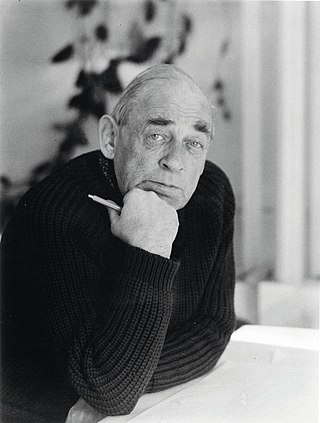
Hugo Alvar Henrik Aalto was a Finnish architect and designer. His work includes architecture, furniture, textiles and glassware, as well as sculptures and paintings. He never regarded himself as an artist, seeing painting and sculpture as "branches of the tree whose trunk is architecture." Aalto's early career ran in parallel with the rapid economic growth and industrialization of Finland during the first half of the 20th century. Many of his clients were industrialists, among them the Ahlström-Gullichsen family, who became his patrons. The span of his career, from the 1920s to the 1970s, is reflected in the styles of his work, ranging from Nordic Classicism of the early work, to a rational International Style Modernism during the 1930s to a more organic modernist style from the 1940s onwards.
The Aalto Vase, also known as the Savoy Vase, is a piece of glassware created by Alvar Aalto and his wife Aino that has become an internationally known iconic piece of Finnish design. It became known as the Savoy Vase because it was one of a range of custom furnishings and fixtures created by Alvar and Aino Aalto for the luxury Savoy restaurant in Helsinki that opened in 1937.
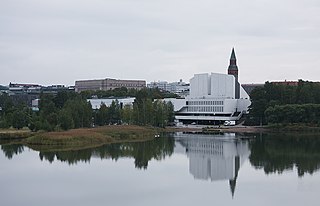
The Finlandia Hall is a congress and event venue in the centre of Helsinki on the Töölönlahti Bay, owned by the City of Helsinki. The building, which was designed by architect Alvar Aalto, was completed in 1971. Every detail in the building is designed by Aalto. The designs were completed in 1962, with building taking place between 1967 and 1971. The Congress Wing was designed in 1970 and built in 1973–1975. In 2011, the building was expanded with new exhibition and meeting facilities. Finlandia Hall is known as the venue for the OSCE Summit held in August 1975, attended by 35 world leaders, including the leader of the Soviet Union, Leonid Brezhnev, and the President of the United States, Gerald Ford.

Aino Maria Marsio-Aalto was a Finnish architect and a pioneer of Scandinavian design. She is known as a co-founder of the design company Artek and as a collaborator on its most well-known designs. As Artek's first artistic director, her creative output spanned textiles, lamps, glassware, and buildings. It has been discovered that it was Aino who completed the first work commissioned through Artek which was the Viipuri Library in 1935. Her work is in the permanent collection of the Museum of Modern Art (MoMA) in New York, and MoMA has included her work in nine exhibitions. Aino Aalto’s first exhibition was Art in Progress: 15th Anniversary Exhibitions: Design for Use at MoMA in 1944. Other major exhibitions were at the Barbican Art Gallery in London and Chelsea Space in London. Aino Aalto has been exhibited with Pablo Picasso.
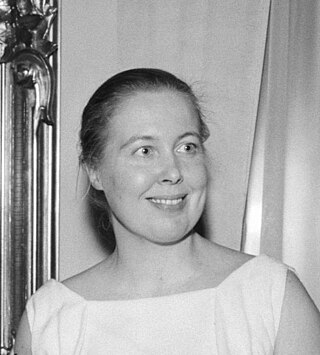
Elissa Aalto was a Finnish architect.

Yrjö Ilmari Tapiovaara was a Finnish designer noted for his furnishings and textiles.

Paimio Sanatorium is a former tuberculosis sanatorium in Paimio, Southwest Finland, designed by Finnish architect Alvar Aalto. Aalto received the design commission having won the architectural competition for the project held in 1929. The building was completed in 1933, and soon after received critical acclaim both in Finland and abroad. The building served exclusively as a tuberculosis sanatorium until the early 1960s, when it was converted into a general hospital. Today the building is owned by Turku University Hospital but is not functioning as a hospital; rather, the building has functioned as private rehabilitation center for children since 2014. The sanatorium has been nominated to become a UNESCO World Heritage Site.
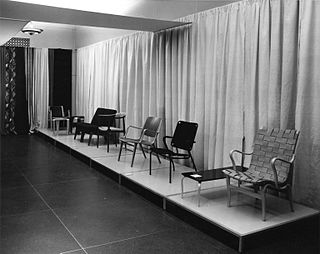
Scandinavian design is a design movement characterized by simplicity, minimalism and functionality that emerged in the early 20th century, and subsequently flourished in the 1950s throughout the five Nordic countries: Denmark, Finland, Norway, Sweden, and Iceland.

Juha Ilmari Leiviskä is a prominent Finnish architect and designer. He is especially known for his churches and other sacral buildings.

Iittala, founded as a glassworks in 1881, is a Finnish design brand specialising in design objects, tableware and cookware. Iittala's official i-logo was designed by Timo Sarpaneva in 1956.
Aalto is a Finnish surname meaning "wave". Notable people with the surname include:

Steam bending is a woodworking technique where wood is exposed to steam to make it pliable. Heat and moisture from steam can soften wood fibres enough so they can be bent and stretched, and when cooled down they will hold their new shape.

Grete Juel Jalk (1920–2006) was a Danish furniture designer. From the 1960s, she did much to enhance Denmark's reputation for modern furniture design with her clear, comfortable lines. She also edited the Danish magazine Mobilia and compiled a four-volume work on Danish furniture.

Maire Eva Johanna Gullichsen was a Finnish art collector and patron. She was a co-founder of the Artek furniture company. Pori Art Museum is based on Gullichsen's art collection.

Huonekalutehdas Korhonen Oy, formerly called O.Y. Huonekalu- ja Rakennustyötehdas A.B is a former furniture producer located in Littoinen, Kaarina, Finland. The company was once known for manufacturing Alvar Aalto designed furniture.

The Alvar Aalto Museum is a Finnish museum operating in two cities, Jyväskylä and Helsinki, in two locations each, dedicated to architect and designer Alvar Aalto. All four locations are open to the public. They are:
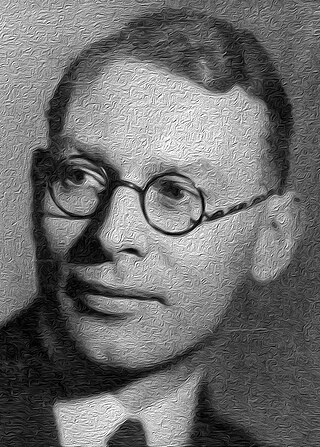
Gerald Summers (1899–1967) was a British mid-century modern furniture designer. He came to prominence with his design for the Bent Plywood Armchair. Another of his noted works was the Two-Tier Table. Both pieces were designed in 1934 and manufactured by Makers of Simple Furniture, the firm he founded.

The Model 60 stacking stool is a wooden stool designed by Finnish designer Alvar Aalto in 1933. Manufactured by Artek, the stool is one of Aalto's most famous furniture designs.

Hotel Marski is a hotel opened 1962 on Mannerheimintie 10 in Helsinki, Finland.




















